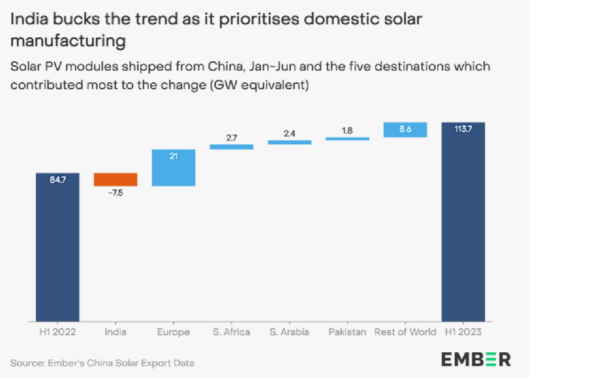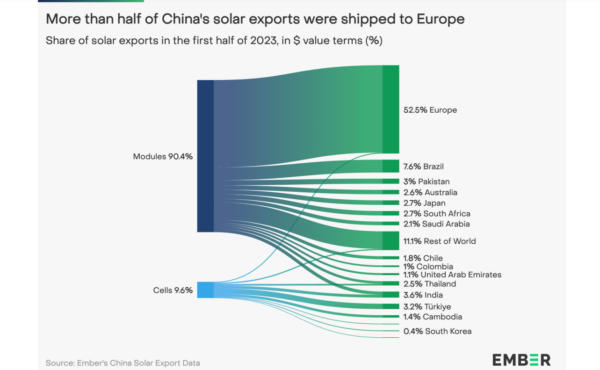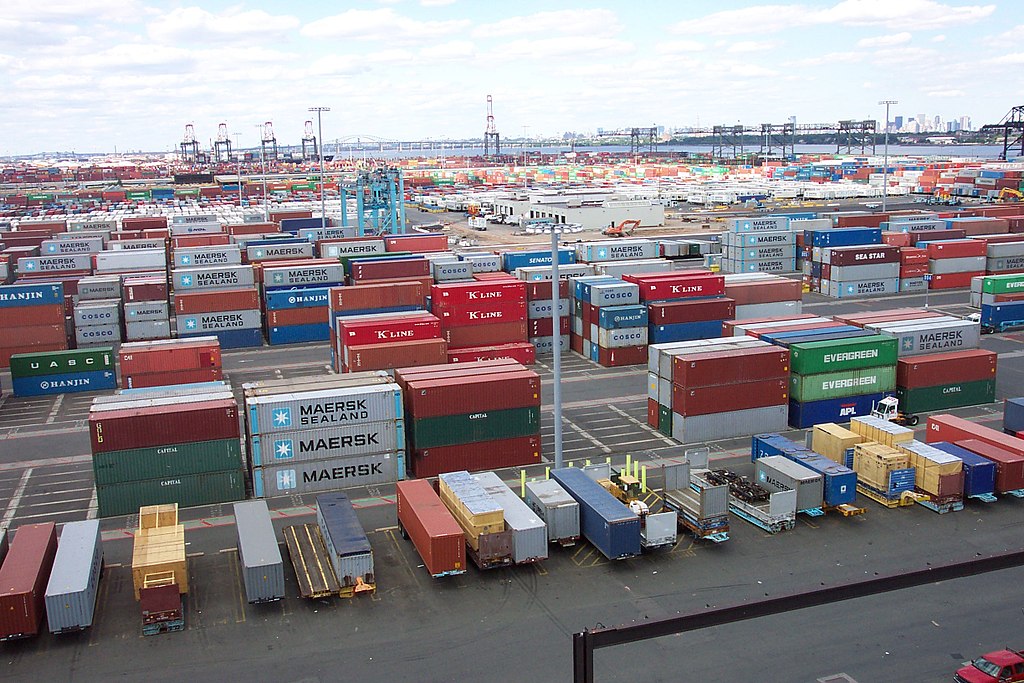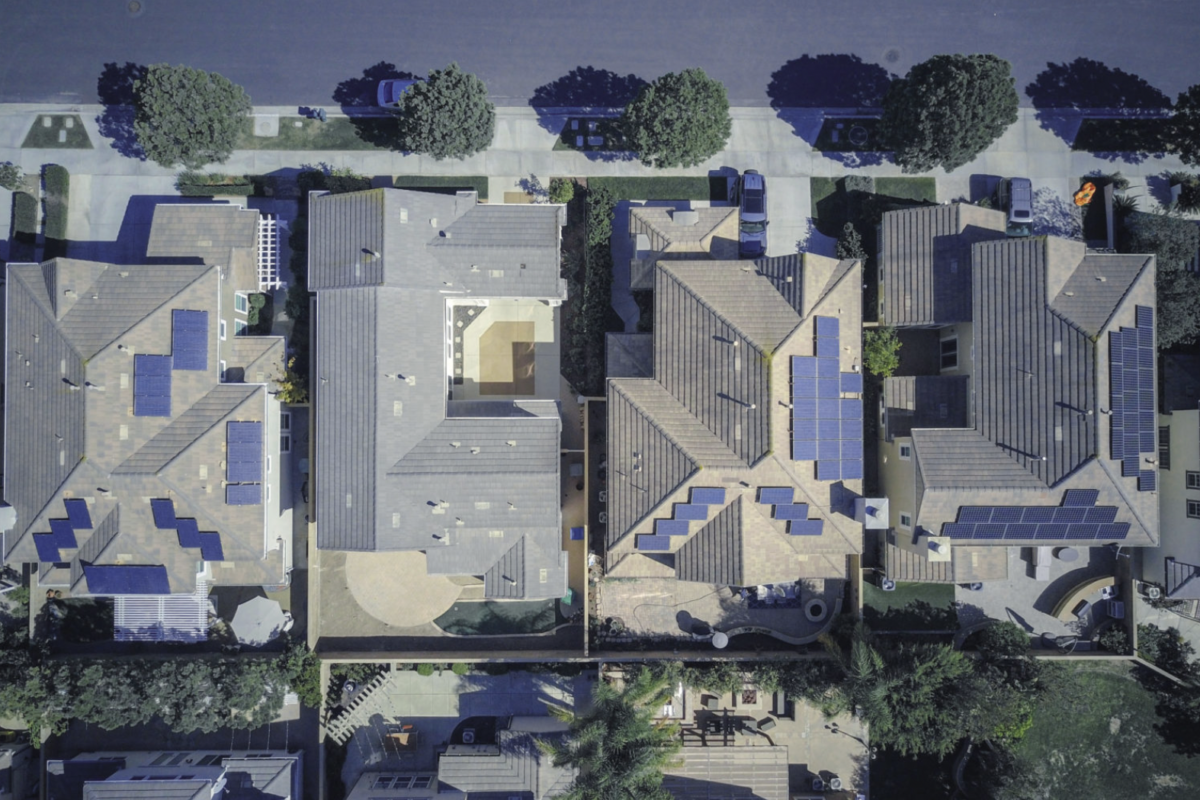From pv magazine India
India has experienced a 76% year-on-year decline in its solar module imports from China, according to energy think tank Ember. During the first half of 2023, India imported 2.3 GW of modules from China, from 9.8 GW imported during the corresponding period in 2022. This decline was attributed to the imposition of tariffs and India's shift toward bolstering domestic manufacturing capacity.
The report shows that India stands alone as the only country to experience a substantial decrease in PV panel imports from China. As India focused and prioritized domestic solar manufacturing, Asia became the only region to see fewer solar imports from China over the first half of 2023.
“India’s dependence on China for solar module imports is well and truly reducing post-2022 with domestic manufacturing now starting to ramp up as a result of the recent policy interventions,” said Neshwin Rodrigues, India electricity policy analyst for Ember. “As India gets closer to being self-sufficient in solar manufacturing, overreliance on Chinese modules and cells is no longer the limiting factor. What’s needed now is an effective policy environment to ensure solar installations also ramp up commensurately to not fall behind the National Electricity Plan targets.”
The Ember report looks at Chinese export data and introduces a new data set that offers current monthly information for each destination country. China commands more than 80% of the global market share of solar manufacturing capacity, and the expansion of Chinese exports carries global implications for the advancement of clean energy.
China's solar panel exports surged by 34% in the first half of 2023, totaling 114 GW worldwide, in contrast to 85 GW during the same period the previous year. Europe accounted for the majority, representing 58% (66 GW) of China's solar module exports in the first half of 2023. This region also experienced the most significant absolute growth worldwide, with a 47% year-on-year increase in solar panel imports from China.
Following Europe, Brazil emerged as the second-largest importer, receiving 9.5 GW of Chinese solar panel exports in the first half of 2023. The report also notes that India has become the second-largest importer of China-made solar cells, trailing only behind Turkey.

The International Energy Agency reports that global solar PV manufacturing capacity has surged by more than 70% to reach almost 450 GW in 2022. Projections indicate that it will double once more, reaching nearly 1,000 GW of capacity per year by 2024. While China remains the primary contributor to this growth, approximately 70 GW of annual capacity is set to be added in the United States, Europe, India, and various Asian countries.
“We have enough solar panels, we just need to get busy installing them,” said Sam Hawkins, data lead at Ember. “Policies should focus on ensuring installation and grid integration can ramp up as fast as global module supply.”
This content is protected by copyright and may not be reused. If you want to cooperate with us and would like to reuse some of our content, please contact: editors@pv-magazine.com.




1 comment
By submitting this form you agree to pv magazine using your data for the purposes of publishing your comment.
Your personal data will only be disclosed or otherwise transmitted to third parties for the purposes of spam filtering or if this is necessary for technical maintenance of the website. Any other transfer to third parties will not take place unless this is justified on the basis of applicable data protection regulations or if pv magazine is legally obliged to do so.
You may revoke this consent at any time with effect for the future, in which case your personal data will be deleted immediately. Otherwise, your data will be deleted if pv magazine has processed your request or the purpose of data storage is fulfilled.
Further information on data privacy can be found in our Data Protection Policy.